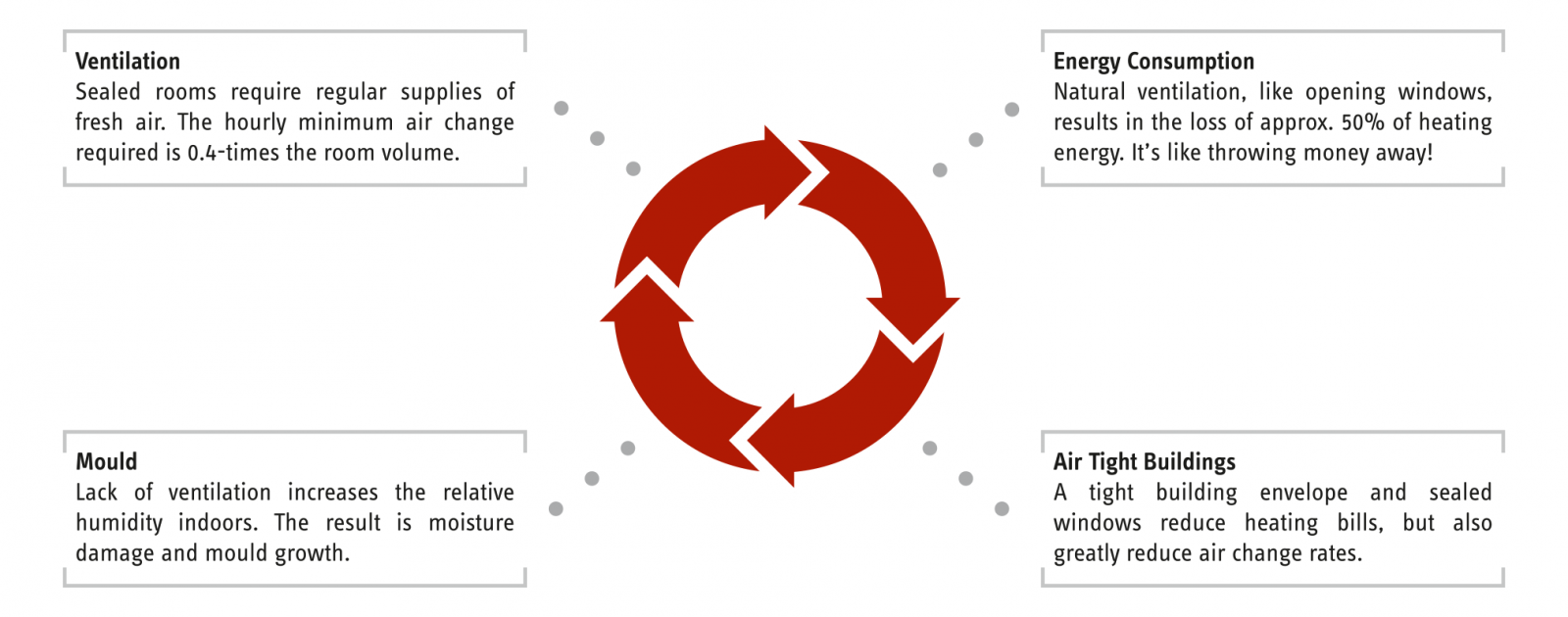Control Mechanical Ventilation
Go Back To VentilationReplacement of air, room climate control, saving energy and more. More about ventilation systems with heat recovery to suit you.
Fresh air when you need it – with automatic ventilation systems
Out with the old, in with the new – fully automatic replacement of air with a ventilation system. Whether you want to regularly ventilate humid rooms, create a more comfortable climate in hot rooms or ensure effective ventilation of new buildings with an airtight building envelope – there is a suitable solution.
In well insulated houses, conventional intermittent ventilation is often no longer sufficient. Unlike in older buildings, the moisture cannot escape through window frames, gaps in doors or roller shutter boxes, for example. On the other hand, intermittent ventilation results in the loss of about 50 percent of the heating energy through windows and infiltration. Here, the benefits of mechanical ventilation are clear: it provides a replacement of air, avoids energy losses and therefore helps save energy and prevent damage to the building – and all that fully automatically.
In controlled mechanical ventilation, we distinguish between central ventilation units and decentralised ventilation units. A range of products for individual room ventilation is also available.
Decentralised ventilation systems are used were individual rooms, such as bathrooms, toilets or kitchens are fitted with separate ventilation units. For apartments and houses, central ventilation systems are particularly suitable.


Benefits of a ventilation system
Ventilation systems
- … ensure the minimum air change rate between the room and the outside necessary to satisfy hygiene requirements.
- … extract excess humidity.
- … protect the building structure and prevent the formation of fungal mould.
- … reduce the ventilation heat demand and heating energy costs.
- … guarantee ventilation in any weather without noise disturbance.
- … filtered fresh outdoor air.
- … extract odours.

Is a ventilation system audible?
Only if it was incorrectly engineered. A correctly sized folded spiral-seam system is as effective and quiet as if the vents are connected via conventional ducts. The use of a star-shaped plenum leaves less room for engineering errors. It is vital that the point at which the individual ducts meet – referred to as the plenum box – is of a suitable size and design for the respective ventilation unit. The ventilation unit and sound insulating distributor should also be matched to each other.
Can air movement be felt?
In general, only escaping air can be felt, never intake air. If the flow velocity is low and the temperature level about the same as the room temperature, air currents are barely noticeable. The flow velocity from a vent is comparable with a slow exhale.
